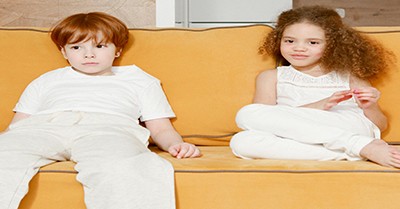Young children often explore their world through touch and close contact, but rough play can lead to upset or hurt feelings. Introducing personal space and consent concepts early helps preschoolers learn boundaries, empathy, and respectful interactions.
Why It Matters
Teaching personal space helps children:
-
Understand boundaries and consent
-
Build empathy and respect for others
-
Navigate social interactions safely and confidently
Hands-On Activities
-
Hula-Hoop Bubbles: Give each child a hoop to stand inside; explain the hoop is their personal bubble. Practice asking permission before entering another child’s hoop
-
Imaginary Bubble Spots: Place colored spots on the mat; each child sits on their spot to visualize space. Encourage children to move only with a peer’s invitation
-
Life-Size Body Art: Trace each child on butcher paper. Let them decorate their “space” and discuss how it feels when someone steps into it.
-
Simon Says (Body Edition): Use commands like “Simon says touch your nose” to build body awareness and self-regulation.
-
Space Invader Freeze Dance: Dance freely, but freeze when someone gets too close. Discuss how it felt and what respectful space looks like.
-
Red Light, Green Light (with Distance): Add a twist where children must stop if they’re too close to someone else.
-
Role Play Scenarios: Act out common preschool situations (e.g., asking for hugs, sharing toys) and practice saying “no” or “please give me space.”
-
Personal Space Circle Map: Draw concentric circles around a child’s name—family, friends, strangers—and discuss how behavior changes with each group.
-
Space Invader Poster: Create a classroom poster with an alien character showing respectful vs. invasive behaviors.
-
Saying “No” Game: Children in hula hoops respond to requests for hugs or high-fives with “no” or “yes,” practicing assertiveness.
-
Good vs. Bad Choices Chart: Sort behaviors like “grabbing” or “asking before hugging” into categories to spark discussion.
-
Emotional Dice Game: Roll dice with emotions and act them out—helps children read body language and emotional cues.
Everyday Classroom Strategies
-
Clear, Consistent Language: “If someone touches your bubble, you can move away instead of complaining.” Use phrases like “May I hug you?” or “Can I hold your hand?”
-
Morning & Evening Boundary Songs: Sing the chosen boundary tune during circle times to reinforce concepts daily
-
Visual Reminders: Display posters illustrating personal bubbles and permission phrases
- Personal Space Mats: Use carpet squares or mats during group time to define each child’s space.
- Boundary Markers: Tape lines or footprints on the floor to guide spacing in queues or transitions.
- Consistent Phrases: Use phrases like “Let’s give our friends space” or “Check your bubble” during play.
- Model Respectful Entry: Narrate your own actions: “I’m going to sit beside you—may I join?”
- Teach Consent Language: Embed “Can I give you a hug?” or “Is it okay if I sit here?” into daily scripts.
- Circle Time Check-Ins: Use a feelings chart or puppet to discuss how personal space feels when we’re happy, sad, or overwhelmed.
- Transition Signals: Use songs or hand signals to guide movement and spacing during transitions.
- Cool-Down Corners: Provide a quiet space with sensory tools where children can regulate and reclaim personal space.
- Mini Scenarios: Act out common situations (e.g., someone standing too close) and brainstorm respectful responses.
-
Puppet Conversations: Use puppets to model asking for space, saying “no,” and respecting boundaries.
-
Table Talk Prompts: Ask questions like “How do we know if someone wants space?” during meals.
- Seating Choices: Let children choose where to sit with visual cues for spacing.
- Emotion-to-Action Mapping: Help children link feelings (e.g., “I feel squished”) to actions (“I can say ‘please move back’”).
- Cultural Sensitivity: Acknowledge that personal space norms vary—invite family input and reflect diverse practices.
- Micro-Moment Reflection: Use quick journaling or drawing to reflect on a moment when personal space was respected or challenged.
Integrating Rough-and-Tumble Play
Rather than eliminating spirited play, channel it with structured activities:
- Designated Tackle Zones: safe areas with soft mats where children can engage in supervised, energetic play
- Turn-Taking Signals: teach children to count to three before tackling or pulling gently
- “Safe Word” Agreement: a simple word like “Stop” that any child can use to pause rough play
This approach validates children’s need for active social play while embedding clear safety rules.
By combining engaging books, memorable songs, hands-on props, and structured play, educators can help preschoolers internalize personal space and consent. Consistency, clear language, and frequent practice ensure that young children build respect for themselves and others—laying the foundation for healthy relationships.
Further Reading
Lulu Says Yes, Lulu Says No
Teaching Consent to Toddlers and Preschoolers
Simple Songs About Consent For Children
Promoting Empathy In Children
Helping Children Develop Self-Awareness
